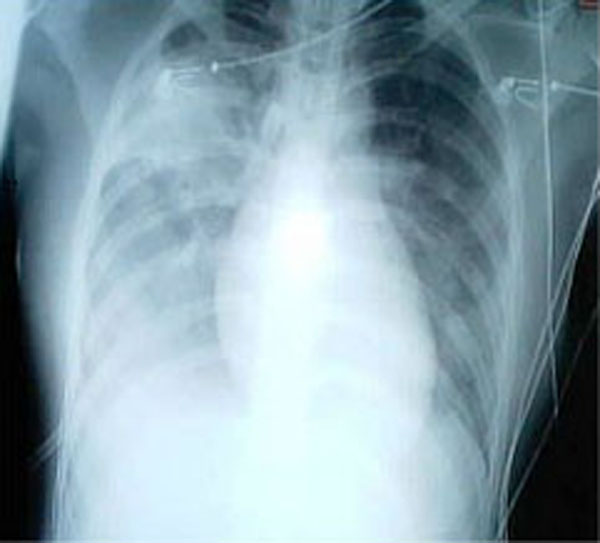|
COVID-19 Pandemic In Austria
The COVID-19 pandemic in Austria was a part of the COVID-19 pandemic, worldwide pandemic of COVID-19, coronavirus disease 2019 () caused by severe acute respiratory syndrome coronavirus 2 (). In Austria, a pair of cases were confirmed on 25 February 2020. The cases involved a 24-year-old man and a 24-year-old woman who were travelling from Lombardy, Italy, and were treated at a hospital in Innsbruck. According to new figures released by Austrian authorities on 23 June, the first case in the country was recorded in Ischgl, Tyrol (state), Tyrol on 8 February. As of 4 February 2023, a total of 20,369,447 vaccine doses have been administered. Background On 12 January 2020, the World Health Organization (WHO) confirmed that a novel coronavirus was the cause of a respiratory illness in a cluster of people in Wuhan, Hubei, China, which was reported to the WHO on 31 December 2019. The Case fatality rate, case fatality ratio for COVID-19 has been much lower than Severe acute res ... [...More Info...] [...Related Items...] OR: [Wikipedia] [Google] [Baidu] |
COVID-19 Austria Cases Per Capita (last 14 Days)
Coronavirus disease 2019 (COVID-19) is a contagious disease caused by the coronavirus SARS-CoV-2. In January 2020, the disease spread worldwide, resulting in the COVID-19 pandemic. The symptoms of COVID‑19 can vary but often include fever, fatigue, cough, breathing difficulties, loss of smell, and loss of taste. Symptoms may begin one to fourteen days after exposure to the virus. At least a third of people who are infected do not develop noticeable symptoms. Of those who develop symptoms noticeable enough to be classified as patients, most (81%) develop mild to moderate symptoms (up to mild pneumonia), while 14% develop severe symptoms (dyspnea, hypoxia, or more than 50% lung involvement on imaging), and 5% develop critical symptoms (respiratory failure, shock, or multiorgan dysfunction). Older people have a higher risk of developing severe symptoms. Some complications result in death. Some people continue to experience a range of effects (long COVID) for months or yea ... [...More Info...] [...Related Items...] OR: [Wikipedia] [Google] [Baidu] |
Tyrol (state)
Tyrol ( ; ; ) is an Austrian Provinces of Austria, federal state. It comprises the Austrian part of the historical County of Tyrol, Princely County of Tyrol. It is a constituent part of the present-day Euroregion Tyrol–South Tyrol–Trentino (together with South Tyrol and Trentino in Italy). The capital of Tyrol is Innsbruck. Geography Tyrol is separated into two parts, divided by a strip of Salzburg (federal state), Salzburg State. The two constituent parts of Tyrol are the northern and larger North Tyrol () and the southeastern and smaller East Tyrol ('). Salzburg State lies to the east of North Tyrol, while on the south Tyrol has a border to the Italy, Italian province of South Tyrol, which was part of the Austro-Hungarian Empire before the First World War. With a land area of , Tyrol is the third-largest federal state in Austria. North Tyrol shares its borders with the federal states Salzburg in the east and Vorarlberg in the west. In the north, it adjoins the Germany ... [...More Info...] [...Related Items...] OR: [Wikipedia] [Google] [Baidu] |
Wien - Anti-Corona-Demo, Performance-Gruppe Mit Schutzanzügen
Vienna ( ; ; ) is the capital city, capital, List of largest cities in Austria, most populous city, and one of Federal states of Austria, nine federal states of Austria. It is Austria's primate city, with just over two million inhabitants. Its larger metropolitan area has a population of nearly 2.9 million, representing nearly one-third of the country's population. Vienna is the Culture of Austria, cultural, Economy of Austria, economic, and Politics of Austria, political center of the country, the List of cities in the European Union by population within city limits, fifth-largest city by population in the European Union, and the most-populous of the List of cities and towns on the river Danube, cities on the river Danube. The city lies on the eastern edge of the Vienna Woods (''Wienerwald''), the northeasternmost foothills of the Alps, that separate Vienna from the more western parts of Austria, at the transition to the Pannonian Basin. It sits on the Danube, and is ... [...More Info...] [...Related Items...] OR: [Wikipedia] [Google] [Baidu] |
Healthcare Number 1450
The Healthcare number 1450 - "When it hurts! 1450" - is the first point of contact for health questions in Austria. Specially trained qualified nursing staff advise callers on their health complaints. If the callers do not know to whom they should contact because of their symptoms, the trained staff members give appropriate recommendations for symptoms by asking specific questions using a medical-scientific query system - taking into account the current whereabouts of the caller. Therefore, on a low-threshold level the Austrian emergency call 144, reception desks in outpatient clinics and doctors in private practice can be relieved. Telephone health counselling began as a pilot project "TeWeb" (telephone and web-based first contact and counselling service) on 7 April 2017 in Vienna, Lower Austria and Vorarlberg and went into operation throughout Austria on 4 November 2019. The telephone number can be reached 24 hours a day and also at weekends. The caller only incurs the usual te ... [...More Info...] [...Related Items...] OR: [Wikipedia] [Google] [Baidu] |
Nordic Countries
The Nordic countries (also known as the Nordics or ''Norden''; ) are a geographical and cultural region in Northern Europe, as well as the Arctic Ocean, Arctic and Atlantic Ocean, North Atlantic oceans. It includes the sovereign states of Denmark, Finland, Iceland, Norway and Sweden; the autonomous administrative division, autonomous territories of the Faroe Islands and Greenland; and the autonomous region of Åland. The Nordic countries have much in common in their way of life, History of Scandinavia, history, religion and Nordic model, social and economic model. They have a long history of political unions and other close relations but do not form a singular state or federation today. The Scandinavism, Scandinavist movement sought to unite Denmark, Norway and Sweden into one country in the 19th century. With the dissolution of the union between Norway and Sweden (Norwegian independence), the independence of Finland in the early 20th century and the 1944 Icelandic constitution ... [...More Info...] [...Related Items...] OR: [Wikipedia] [Google] [Baidu] |
Vienna
Vienna ( ; ; ) is the capital city, capital, List of largest cities in Austria, most populous city, and one of Federal states of Austria, nine federal states of Austria. It is Austria's primate city, with just over two million inhabitants. Its larger metropolitan area has a population of nearly 2.9 million, representing nearly one-third of the country's population. Vienna is the Culture of Austria, cultural, Economy of Austria, economic, and Politics of Austria, political center of the country, the List of cities in the European Union by population within city limits, fifth-largest city by population in the European Union, and the most-populous of the List of cities and towns on the river Danube, cities on the river Danube. The city lies on the eastern edge of the Vienna Woods (''Wienerwald''), the northeasternmost foothills of the Alps, that separate Vienna from the more western parts of Austria, at the transition to the Pannonian Basin. It sits on the Danube, and is ... [...More Info...] [...Related Items...] OR: [Wikipedia] [Google] [Baidu] |
Transmission (medicine)
In medicine, public health, and biology, transmission is the passing of a pathogen causing Infectious disease, communicable disease from an infected host (biology), host individual or group to a particular individual or group, regardless of whether the other individual was previously infected. The term strictly refers to the transmission of microorganisms directly from one individual to another by one or more of the following means: * airborne transmission – very small dry and wet particles that stay in the air for long periods of time allowing airborne contamination even after the departure of the host. Particle size 5 μm. * direct physical contact – touching an infected individual, including sexual contact * indirect physical contact – usually by touching a contaminated surface, including soil (fomite) * fecal–oral route, fecal–oral transmission – usually from unwashed hands, contaminated food or water sources due to lack of sanitation and hygiene, an important tr ... [...More Info...] [...Related Items...] OR: [Wikipedia] [Google] [Baidu] |
Severe Acute Respiratory Syndrome
Severe acute respiratory syndrome (SARS) is a viral respiratory disease of zoonotic origin caused by the virus SARS-CoV-1, the first identified strain of the SARS-related coronavirus. The first known cases occurred in November 2002, and the syndrome caused the 2002–2004 SARS outbreak. In 2004, Xue Wu Zhang and Yee Leng Yap found that the Spike 2 (S2) protein of SARS is structurally similar to HIV-1 gp41 subunit, suggesting an analogous membrane fusion mechanism between the two. In the 2010s, Chinese scientists traced the virus through the intermediary of Asian palm civets to cave-dwelling horseshoe bats in Xiyang Yi Ethnic Township, Yunnan.The locality was referred to be "a cave in Kunming" in earlier sources because the Xiyang Yi Ethnic Township is administratively part of Kunming, though 70 km apart. Xiyang was identified on * For an earlier interview of the researchers about the locality of the caves, see: SARS was a relatively rare disease; at the end of the epid ... [...More Info...] [...Related Items...] OR: [Wikipedia] [Google] [Baidu] |
Case Fatality Rate
In epidemiology, case fatality rate (CFR) – or sometimes more accurately case-fatality risk – is the proportion of people who have been diagnosed with a certain disease and end up dying of it. Unlike a disease's mortality rate, the CFR does not take into account the time period between disease onset and death. A CFR is generally expressed as a percentage. It is a measure of disease lethality, and thus may change with different treatments. CFRs are most often used for with discrete, limited-time courses, such as acute infections. Terminology The ''mortality rate'' – often confused with the CFR – is a measure of the relative number of deaths (either in general, or due to a specific cause) within the entire population per unit of time. A CFR, in contrast, is the number of deaths among the number of diagnosed cases only, regardless of time or total population. From a mathematical point of view, by taking values between 0 and 1 or 0% and 100%, CFRs are actually a measure of ... [...More Info...] [...Related Items...] OR: [Wikipedia] [Google] [Baidu] |





